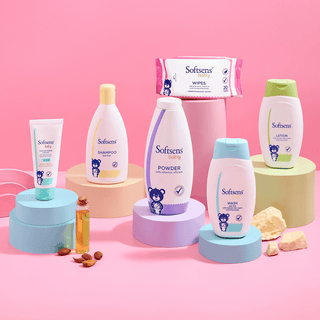
What is weaning?
As your baby grows, you will eventually begin to replace breastmilk with other sources of nutrition. The process of weaning begins when your baby starts getting nourishment from sources other than the breast and is fully complete when your baby finally stops nursing. It is typically a slow and gradual process that is unique to each situation and takes both time and patience.
When should you start weaning?
The World Health Organization recommends that babies should be exclusively breastfed for the first six months, and after that, breastfeeding can be supplemented with solids.
However, each breastfeeding journey is unique. While it is recommended that you start solids only after your baby is six months old, many babies show signs that they are ready to begin a little earlier. Speak to your medical practitioner/lactation consultant to chart out a plan that works best for you and your baby.
When it comes to weaning, there are two different methods you can choose between based on your needs. They are baby-led weaning and traditional weaning.
Baby-led Weaning: As the name suggests,baby-led weaning is a process where you let your baby tell you when they’re ready to stop breastfeeding. This process might begin earlier for some babies whereas some others may choose to nurse for longer. Don’t get frustrated or upset if your baby shows signs that they are ready to stop nursing. Weaning is a natural process and will not lessen the bond between you and your baby. Here are some typical signs to look out for that’ll help you know when to start weaning your baby:
- Your baby can sit up straight without any support and hold his/her head upright.
- Your baby is showing signs that he/she is ready to start chewing and their oral motor skills become more developed.
- When your little one loses the tongue-thrust reflex. This reflex causes them to stick out their tongue every time an object is placed in their mouth.
- They may become increasingly fussy while nursing and may nurse for shorter periods.
- When your baby starts reaching for and grabbing different objects using the thumb and forefinger.
- When your baby shows more interest and starts becoming more involved in your mealtime.
Mother-led Weaning: In this method, moms may choose to encourage and begin the process of weaning on their own. As this process is not initiated by the baby, it can be met with some resistance but with time and patience, works just as effectively. It’s important to remember that your baby shouldn’t feel rushed. Give yourself enough time and flexibility to wean your baby using this method.
How do you start weaning your baby?
We want weaning to be a relaxed and stress-free experience for you and your baby, so we’ve rounded up some of the best mom-tested tips to help you with the weaning process.
1. Start by slowly extending the time between feedings and shortening feeding sessions
The key to proper weaning is to approach it very slowly so that it is not a sudden or stressful change for your baby. Start by extending the time between feedings by half an hour or so each week. You could also try shortening feeding sessions by a few minutes. Make these changes on a weekly basis so that you can slowly build it up over time. The gradual change also helps prevent breast engorgement. If your baby seems very cranky or hungry, you can offer them a bottle with formula or breastmilk. If your baby is over a year old, you can start offering whole milk if need be.
2. Drop one feeding session
Begin to leave out one feeding session per week gradually. Most moms usually start with the midday session as your baby is less likely to be very hungry at that time. Do not start with the morning or bedtime feeding sessions as those are usually important ones for your baby. The bedtime session usually helps comfort and soothe your little one before they go to sleep. Often, moms prefer to drop that one last during the process of weaning. Since you are dropping a nursing session, substitute it by giving your little one a bottle of breastmilk or formula.
3. Engage your child in a fun activity to help distract them from the missed feeding session
Your baby is used to a specific routine and may notice when feeding is being skipped. Try and distract your little one during that period with a fun and engaging activity. Don’t sit in your regular nursing spot.
4. Let other family members take over bottle-feeding sessions
Changing your baby’s routine can help them get accustomed to the change. Let your partner or another family member take over a bottle-feeding session.
5. Take it slow and easy
Weaning is a slow process. Be patient and let your instincts guide you.
6. Don’t start weaning if your baby is already experiencing some other kind of significant change
If your baby is sick or teething, it might not be the right time to start weaning. Pick a time when both you and your baby are relaxed, calm and unbothered by any other kind of stress.
7. Prepare yourself with baby-weaning essentials
Make sure you have a few necessary items before you start weaning your baby. Here’s what we recommend: a highchair, a blender for purees, soft baby spoons, a divided plate, a sippy cup, soft baby bibs and baby wipes for quick cleaning.
8. Introduce baby food slowly
Introducing your baby to solids is exciting, but it can take a while before they begin to accept these new flavours and textures. Until your baby turns one, make sure you supplement solids with breastmilk or formula. After your baby turns one, you can feed them exclusively solids. Click here for our guide on what you need to know before introducing your baby to solid foods.
9. Shower your baby with extra hugs and kisses
Breastfeeding provided your baby with nurturance and comfort. When you stop breastfeeding, it’s important to give your little one extra attention to help them feel secure and comforted. This is an easy one, right? 😊
Do you have any helpful tips on weaning babies? Leave a comment below telling us what worked with your baby.



















